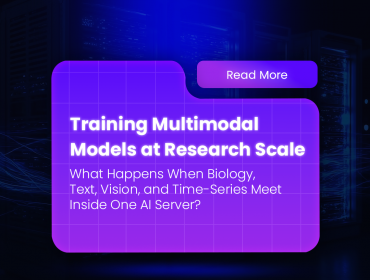Introduction:
In today’s rapidly evolving digital landscape, businesses across various industries are increasingly adopting cloud computing as a key component of their IT infrastructure. Cloud migration, the process of transferring data, applications, and other elements from on-premises systems to the cloud, has become a crucial aspect of digital transformation strategies. As technology continues to advance, the future of cloud migration holds exciting prospects, with emerging trends and technologies revolutionizing the way organizations harness the power of the cloud. In this article, we will explore some of these trends and technologies that are shaping the future of cloud migration.
1. Serverless Computing: Unlocking Scalability and Efficiency
Serverless computing, also known as Function as a Service (FaaS), is an emerging trend that allows developers to focus solely on writing and deploying code without the need to manage server infrastructure. This technology abstracts away the complexities of server management, enabling businesses to scale their applications dynamically and pay only for the actual execution time and resources utilized. With serverless computing, organizations can achieve greater operational efficiency, reduce costs, and respond quickly to changing business demands.
2. Edge Computing: Bringing Processing Power Closer to the Source
As the number of connected devices and Internet of Things (IoT) applications continues to rise, traditional cloud architectures face challenges in latency and bandwidth limitations. Edge computing addresses these challenges by bringing data processing closer to the source, reducing the need for data to travel long distances to centralized cloud servers. By leveraging edge computing, businesses can achieve real-time data processing, lower network congestion, and enhanced security and privacy. This trend is especially relevant in industries such as autonomous vehicles, smart cities, and industrial automation.
3. Hybrid Cloud: Finding the Perfect Balance
While cloud migration has gained significant traction, many organizations still prefer to maintain a hybrid cloud environment, combining both on-premises infrastructure and public or private cloud services. The hybrid cloud offers the flexibility to leverage the benefits of both worlds, allowing businesses to store sensitive data on-premises while utilizing the scalability and cost-effectiveness of the cloud for other workloads. As more advanced hybrid cloud management solutions emerge, organizations can seamlessly integrate their existing infrastructure with cloud services, ensuring a smooth and efficient migration process.
4. Kubernetes: Orchestrating Cloud Workloads
Kubernetes has emerged as a powerful container orchestration platform that simplifies the deployment and management of cloud-native applications. This open-source technology provides automated scaling, load balancing, and fault tolerance, enabling organizations to optimize their cloud infrastructure for maximum efficiency. By leveraging Kubernetes, businesses can efficiently manage complex applications across multiple cloud providers and ensure high availability and scalability.
5. AI and Machine Learning: Enhancing Cloud Capabilities
Artificial Intelligence (AI) and Machine Learning (ML) are transforming the cloud migration landscape by enabling intelligent automation, predictive analytics, and data-driven decision-making. AI-powered tools can analyze vast amounts of data to identify patterns, optimize resource allocation, and enhance security measures. Machine Learning algorithms can also help organizations predict future workloads, enabling them to provision resources accordingly and optimize costs. As AI and ML continue to advance, their integration with cloud migration will further streamline operations and unlock new possibilities.

6. DevOps and Continuous Integration/Continuous Deployment (CI/CD)
DevOps practices and CI/CD methodologies play a critical role in the successful migration of applications to the cloud. DevOps emphasizes collaboration and integration between development and operations teams, promoting faster and more reliable software delivery. CI/CD pipelines automate the build, testing, and deployment processes, allowing organizations to rapidly release updates and new features to their cloud-based applications. By adopting DevOps and CI/CD practices, businesses can accelerate their cloud migration initiatives and improve overall agility.
7. Security and Compliance: Protecting Cloud Assets
As cloud adoption grows, ensuring the security and compliance of cloud assets becomes paramount. Organizations must address concerns such as data privacy, access controls, encryption, and regulatory compliance when migrating sensitive data and applications to the cloud. Emerging technologies such as Zero Trust Architecture, Secure Access Service Edge (SASE), and Cloud Access Security Brokers (CASB) provide enhanced security frameworks that help organizations protect their cloud environments. By adopting a holistic approach to security, businesses can mitigate risks and safeguard their cloud assets effectively.
8. Multi-Cloud and Interoperability
As organizations embrace the cloud, multi-cloud strategies are gaining popularity. A multi-cloud approach involves leveraging services from multiple cloud providers to avoid vendor lock-in, increase resilience, and optimize costs. Interoperability between different cloud platforms and technologies becomes crucial to ensure seamless data and application portability. By designing architectures with interoperability in mind, businesses can harness the benefits of different cloud providers and avoid dependencies on a single vendor.
9. Quantum Computing: The Next Frontier
While still in its infancy, quantum computing holds the promise of revolutionizing cloud computing as we know it. Quantum computers have the potential to perform complex calculations exponentially faster than classical computers, enabling breakthroughs in areas such as cryptography, optimization, and simulation. As quantum computing matures, it will present new challenges and opportunities for cloud migration. Organizations need to stay informed about quantum computing developments and assess how it may impact their future cloud strategies.
10. Data Governance and Ethical Considerations
With the proliferation of data in the cloud, ensuring proper data governance and addressing ethical considerations are becoming increasingly important. Organizations must establish policies and practices to protect data privacy, comply with regulations, and ensure responsible use of data. Transparency, accountability, and ethical decision-making are crucial to building trust with customers and stakeholders. As the future of cloud migration unfolds, organizations will need to prioritize data governance and ethical frameworks to maintain a competitive edge.

Conclusion:
The future of cloud migration is filled with exciting possibilities as emerging trends and technologies reshape the way organizations leverage the power of the cloud. From serverless computing and edge computing to hybrid cloud environments and advanced orchestration tools like Kubernetes, businesses have a wide range of options to optimize their cloud migration strategies. The integration of AI and ML, along with DevOps practices and robust security frameworks, further enhances the capabilities of cloud migration. As organizations navigate the evolving landscape, staying informed about emerging technologies and embracing data governance and ethical considerations will be crucial to success. By embracing these trends and technologies, businesses can unlock the full potential of cloud migration and position themselves for future growth and innovation.









